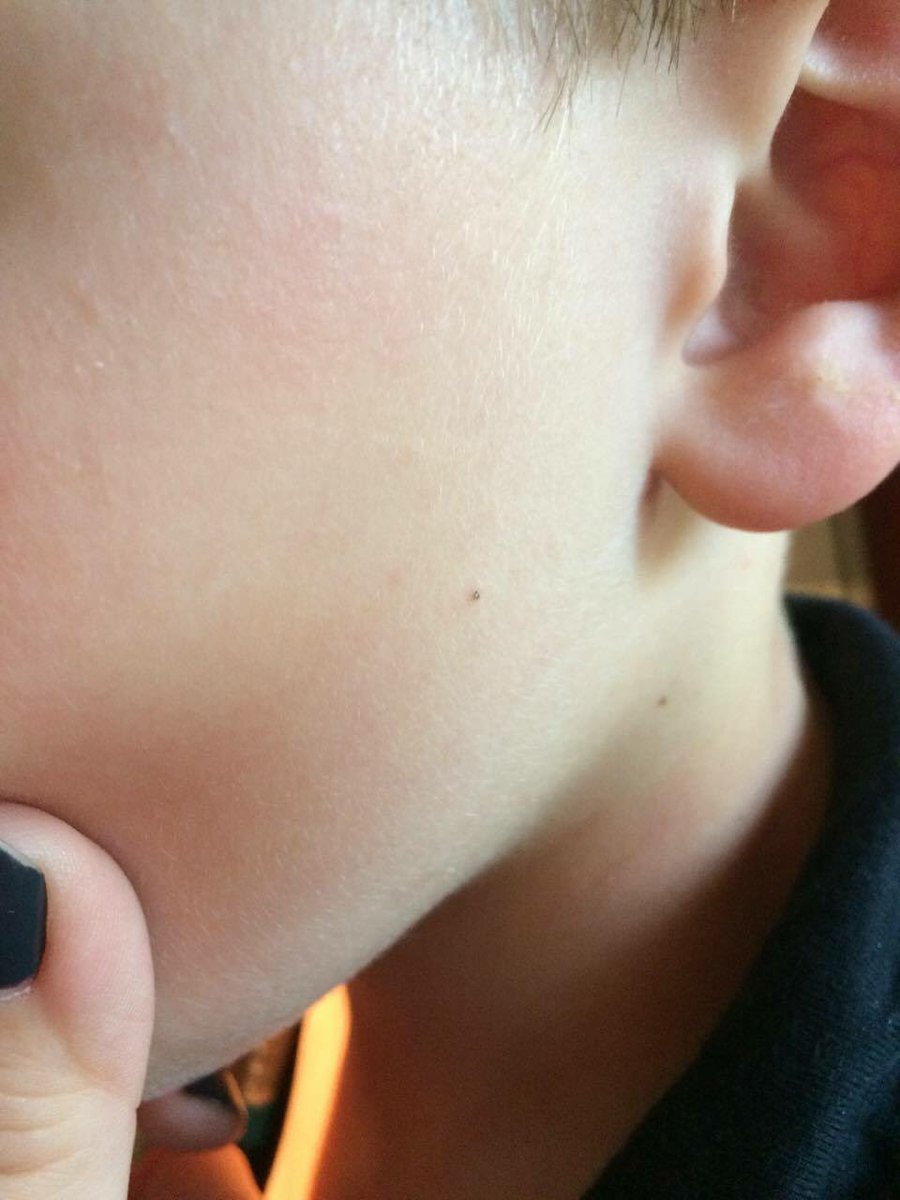Tick bite
Even better than tick removal is to AVOID allowing ticks to attach in the first place. Wearing long pants and sleeves, and walking with a friend who can keep an eye on your back means that you have time to see the tick and brush it off before it attaches.
Keep switching positions of who is in back if walking single file. Look frequently for signs of ticks on you or your friend. If you find an attached tick, safely remove the tick as completely and as quickly as possible without squeezing the body of the tick which can inoculate you with whatever disease may be in the gut of the tick.
It is hard to see ticks that are attached. Look at photo to the right, spot the ticks attached to this child’s face. One is the dark freckle on the cheek and the other freckle on the neck……….>>>
As described in the Transmission section, ticks in the larval or nymphal stage of development acquire the Lyme disease bacterium (Borrelia burgdorferi) by feeding on the blood of an infected host although we now know we not only have Borrelia burgdorferi in our ticks to cause borreliosis (Lyme disease) in humans, we also have other strains and species such as Borrelia miyamotoi, Borrelia hermsii, etc.
With the recently discovered Borrelia miyamotoi, for example, the mother tick can pass the infection to the egg which in turn can pass it to the larvae, on to the nymph and adult. Larvae hatch in the thousands so if you encounter these you may be at risk, and unfortunately they are not much bigger than the period at the end of this sentence making them very hard to detect. One good thing is that, unlike mosquitoes (which can attach and begin feeding within seconds of landing on you) ticks take much more time to crawl to a suitable spot on your body, bite into your skin, secrete a ‘cement’ that secures them in place, and begin feeding/salivation.
Now though, we must revisit all this research done on Borrelia burgdorferi, to see if species/strains such as Borrelia miyamotoi follow the same rules now that we already know Borrelia miyamotoi broke the rule about mother tick not being able to pass the bacteria to their eggs. We have to revisit everything such as, does it take hours before the tick can transmit the disease to you, and if mosquitos can transmit it. Mosquitos have been shown to carry Borrelia burgdorferi in their gut, but have not been shown to successfully transmit it but does that hold true for all Borrelia species/strains.

The safest rule as regards to how long it takes a tick to transmit a borreliosis to you is, ‘the sooner you remove the tick the greater the chance of preventing infection’. This is one reason why checking over your body carefully at the end of a long walk in the woods, then showering using a facecloth and back scrubber to scrub the body is usually sufficient to avoid infection even if the tick has already attached because ticks can be brushed off easily if not yet fully attached.
Safe tick removal methods
Find out how you can safely remove a tick and have it tested!
Watch tick removal video.
